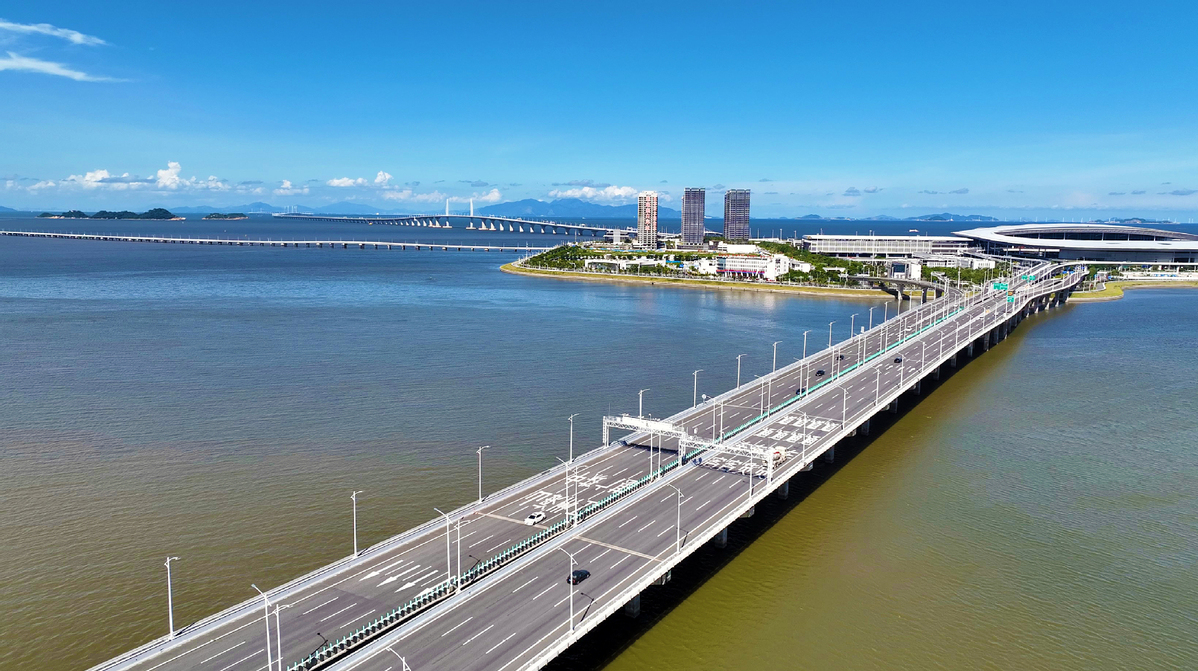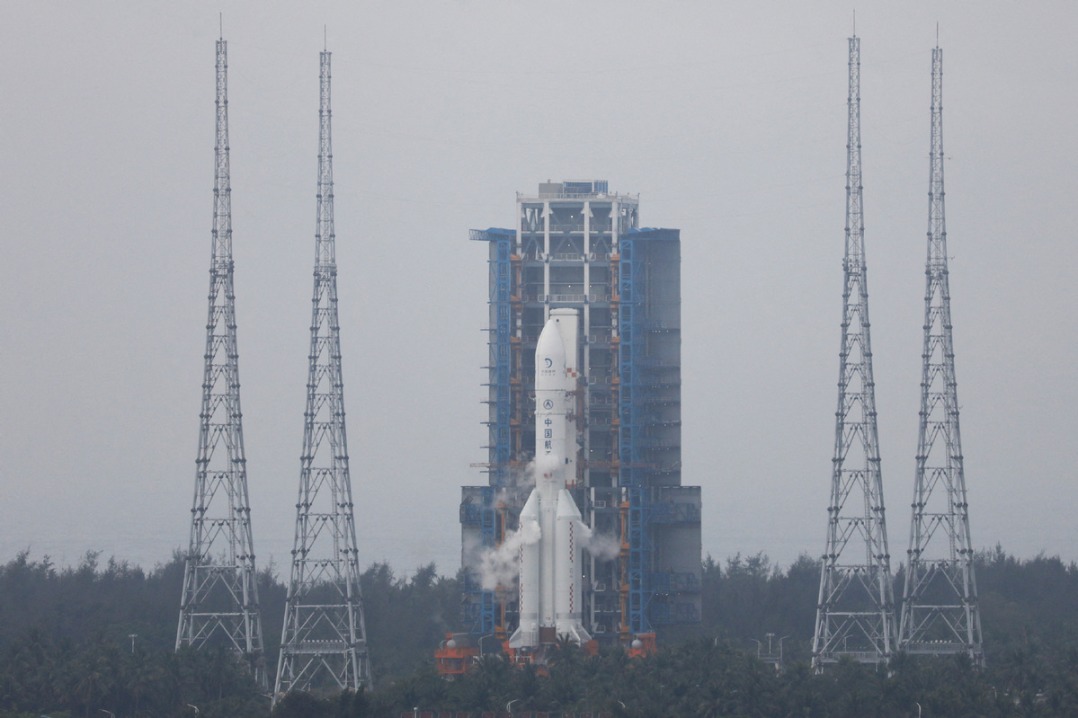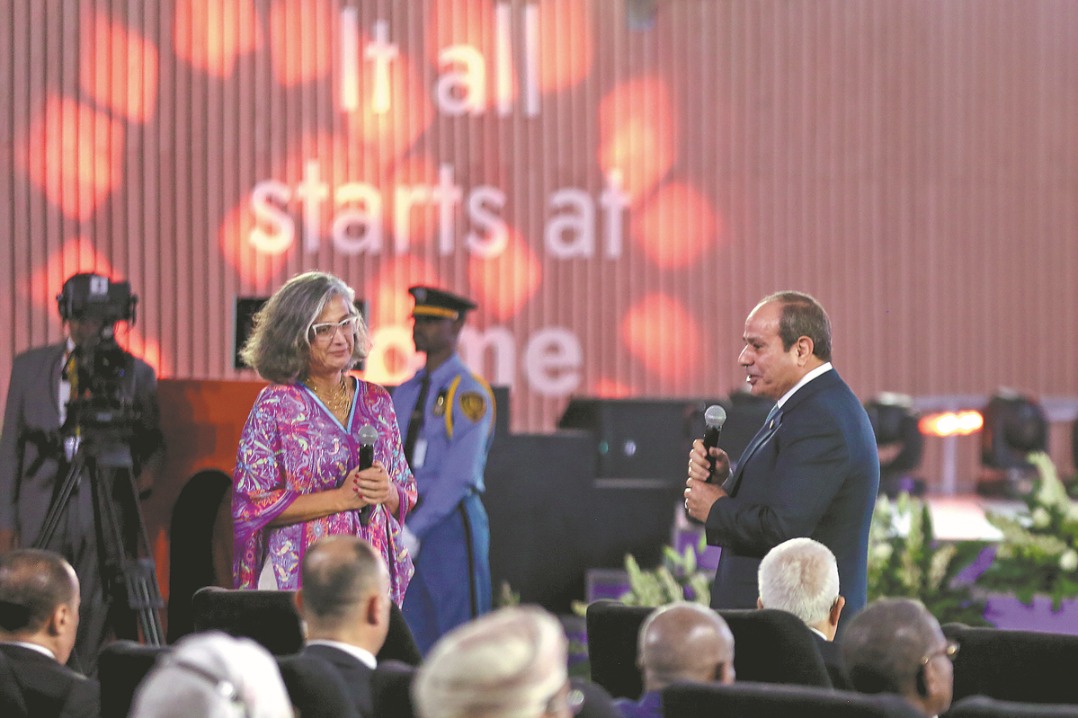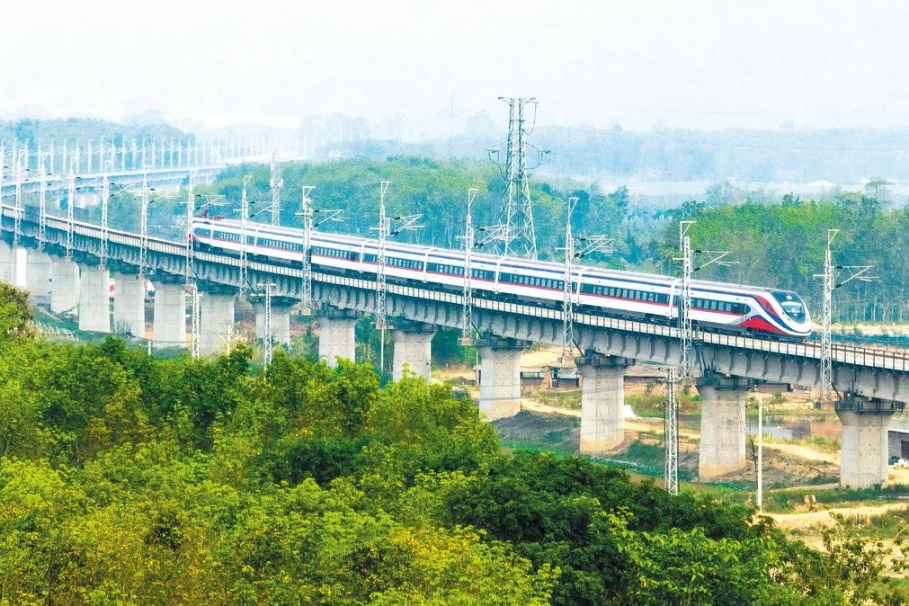Rail network a key link for Greater Bay Area, ASEAN


The successful Greater Bay Area Conference 2023, which was co-hosted by China Daily and the Hong Kong Coalition on Nov 22 in Hong Kong and featured the theme "When GBA Meets ASEAN — One Heart and One Mind", covered many areas of cooperation and development.
The conference mainly aimed at green financial technology, connectivity and tourism in the two major regions, which represent about 680 million people.
A speaker at the conference, Darany Phommavongsa, director of the Tourism Management Department of Laos' Ministry of Information, Culture and Tourism, painted a woeful picture of how her country suffered from the COVID-19 pandemic. But she was extremely optimistic about the nation's future, thanks to the China-Laos high-speed rail system.
In 2019, Laos had 4.79 million tourists, bringing in $934 million, which represented 9.1 percent of the country's economy. Then the dark cloud of COVID-19 loomed over the landlocked country, and in 2022, visitor arrivals fell to 1.3 million, a serious blow to the economy.
But the cloud had a silver lining, and in the first nine months of this year, some 2.4 million foreign tourists arrived in Laos, and another 400,000 to 800,000 are expected in the high season of November and December.
The top three markets for Laos are its neighbors Thailand (45 percent), Vietnam (19.3 percent), and the Chinese mainland (21.3 percent). Laotian authorities have estimated that around 368,000 Chinese travelers will have visited Laos this year, up 21 percent from last year.
The surge in visitor numbers has been partly attributed to the popularity of the China-Laos Railway and the expressway linking the capital, Vientiane, and the tourist hot spot of Vang Vieng.
The railway has also put the tourism sector on the fast track, so to speak. Xinhua News Agency noted in August that with 19 million passengers and 24 million metric tons of freight delivered, and with its cross-border cargo transportation covering more than 10 countries and regions, the railway has become a docking project between the China-proposed Belt and Road Initiative and Laos' strategy to convert itself from a landlocked country to a land-linked hub, benefiting both countries and beyond.
Thanks to the launch of the China-Laos Railway's cross-border passenger train service in April, tourism has been revived in Laos, which is a top priority for the Laotian government's efforts to revitalize the economy this year. According to the newspaper Vientiane Times, tourism experts predict that millions of Chinese tourists will visit member countries of the Association of Southeast Asian Nations, and many of them will travel on the China-Laos Railway.
Darany, the tourism management director of Laos, noted that her country will be the ASEAN chair next year, and the Visit Laos Year 2024 tourism promotion campaign will be rolled out. She said the ministry looks forward to exchanging experiences on heritage conservation and making full use of the region's rich cultural heritage resources in promoting sustainable tourism.
She also said that the China-Laos Railway will help facilitate tourism exchanges within ASEAN.
Analysts have said the connection will not only inject vitality into economies along the line, but will also strengthen the trans-Asian railway system.
The nine mainland cities and the special administrative regions of Hong Kong and Macao, which straddle the Pearl River estuary and make up the Greater Bay Area, are linked to ASEAN by the 986-kilometer Guangzhou-Kunming high-speed railway, on which trains travel 200 to 350 kilometers per hour and pass through Nanning in the Guangxi Zhuang autonomous region en route.
The high-speed link between Hong Kong and Guangzhou has handled 17 million passengers so far this year, while the travel time between the two cities is less than one hour.
Included in the ASEAN connectivity program is the 873-km Kunming-Bangkok railway, a project of the Belt and Road Initiative that aims to connect countries by encouraging cross-border passenger and cargo transportation and tourism between the countries it crosses.
Work on the network, which started in 2017, will include three main routes from Kunming to Bangkok and is expected to be finished in 2027.
Wirun Phichaiwongphakdee, director of the Thailand-China Research Center of the Belt and Road Initiative, who has made several trips to Laos to conduct research on the China-Laos Railway, said that the artery running through the Indochina Peninsula will further promote economy, trade and investment and boost common prosperity under the BRI when linked to the China-Europe freight train network.
Analysts believe the connection will not only inject vitality into the economies along the line, but will also strengthen the trans-Asian railway system. When the China-Thailand railway is completed, it will take trains from the Thai capital of Bangkok to the country's northeastern border town of Nong Khai, where a bridge will connect it with the southern end of the China-Laos Railway.
But the current star is Indonesia, which successfully launched Southeast Asia's first high-speed rail route on Oct 2. The 142-km track between Jakarta and Bandung, the provincial capital of West Java and the third-largest city in Indonesia, cuts travel time from three hours by conventional railway to just 40 minutes using the high-speed train, reaching a top speed of 350 km/h. The $7.3 billion rail system, built under the BRI, was financed by the China Development Bank and a local consortium.
Before the launch, Chinese Premier Li Qiang took a test ride on the new bullet train with Indonesian Coordinating Minister for Maritime Affairs and Investment Luhut Binsar Pandjaitan during the ASEAN Summit in September.
The author, a former chief information officer of the Hong Kong government, is a public relations and media consultant.

































